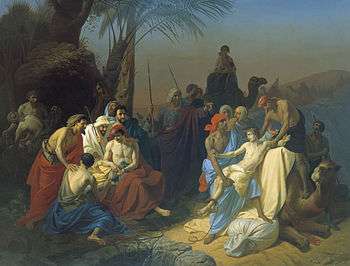Holy Monday

Holy Monday or Great and Holy Monday (Greek: Μεγάλη Δευτέρα, Megale Deutera) is the Monday of Holy Week, which is the week before Easter. Death and Resurrection of Jesus. It is the third day of Holy Week in Eastern Christianity, after Lazarus Saturday and Palm Sunday, and the second day of Holy Week in Western Christianity, after Palm Sunday.
Biblical narrative
The Gospels tell us of some of the events that actually occurred on the day of the Biblical Holy Monday. Some of the most notable and recognizable of these were the cursing of the fig tree (Matthew 21:18-22,Mark 11:20-26), the questioning of Jesus' authority (Matthew 21:23-27), the Cleansing of the Temple and some diverse parables, depending on which Gospel is read.
Western Christianity
In the Roman Catholic Church, the Gospel lesson at Mass is John 12:1-9, which chronologically occurred before the Entry into Jerusalem described in John 12:12-19. Other readings used are Isaiah 42:1-7 and Psalm 27:1-3, 13-14.
Few Protestant churches have special services for Holy Monday. Those that do, may follow the general pattern of the Roman Catholic observance.
Eastern Christianity

In the Orthodox Church and those Eastern Catholic Churches that follow the Byzantine Rite, this day is referred to as Great and Holy Monday, or Great Monday. On this day the Church commemorates the withering of the fruitless fig tree (Matthew 21:18-22), a symbol of judgement that will befall those who do not bring forth the fruits of repentance.[1] The hymns on this day also recall Joseph, the son of Jacob, whose innocent suffering at the hand of his brethren (Genesis 37), and false accusation (Genesis 39-40) are a type (foreshadowing) of the Passion of Christ.[1]
The day begins liturgically with Vespers on Palm Sunday night, repeating some of the same stichera (hymns) from the Praises of the All Night Vigil the evening before. At Small Compline a Triode (Canon composed of three Odes), written by St. Andrew of Crete is chanted.
The Matins service for Monday through Wednesday of Holy Week is known as the Bridegroom Service or Bridegroom Prayer, because of their theme of Christ as the Bridegroom of the Church, a theme expressed in the troparion that is solemnly chanted near the beginning of the service. On these days, an icon of "Christ the Bridegroom" is placed on an analogion in the center of the temple, portraying Jesus wearing the purple robe of mockery and crowned with a crown of thorns (see Instruments of the Passion). The Matins Gospel read on this day is from the Gospel of Matthew 21:18-43). The canon at Matins has only three odes in it (a triode), and was composed by St. Cosmas of Maiuma.
The four Gospels are divided and read in their entirety at the Little Hours (Third Hour, Sixth Hour and Ninth Hour) during the course of the first three days of Holy Week, halting at John 13:31. There are various methods of dividing the Gospels, but the most common is:[2]
- Holy and Great Monday
- Third Hour—The first half of Matthew
- Sixth Hour—The second half of Matthew
- Ninth Hour—The first half of Mark
At the Sixth Hour there is a reading from the Book of Ezekiel 1:1-20
At the Liturgy of the Presanctified Gifts, some of the stichera from the previous night's Matins (Lauds and the Aposticha) are repeated at Lord, I have cried (see Vespers). There are two Old Testament readings: Exodus 1:1-20 and Job 1:1-12. There is no Epistle reading, but there is a Gospel reading from Matthew 24:3-35.
References
- 1 2 Kallistos (Ware), Bishop (1978). Mary, Mother, ed. The Lenten Triodion. South Canaan, PA: St. Tikhon's Seminary Press. pp. 59–60. ISBN 978-1878997517.
- ↑ Kallistos 1978, p. 518.
External links
- Great and Holy Monday Orthodox icon and synaxarion
- Scriptural Reading for the Monday of Holy Week from the Office of Readings (Roman Catholic)
- Monday in Holy Week Online liturgical resources